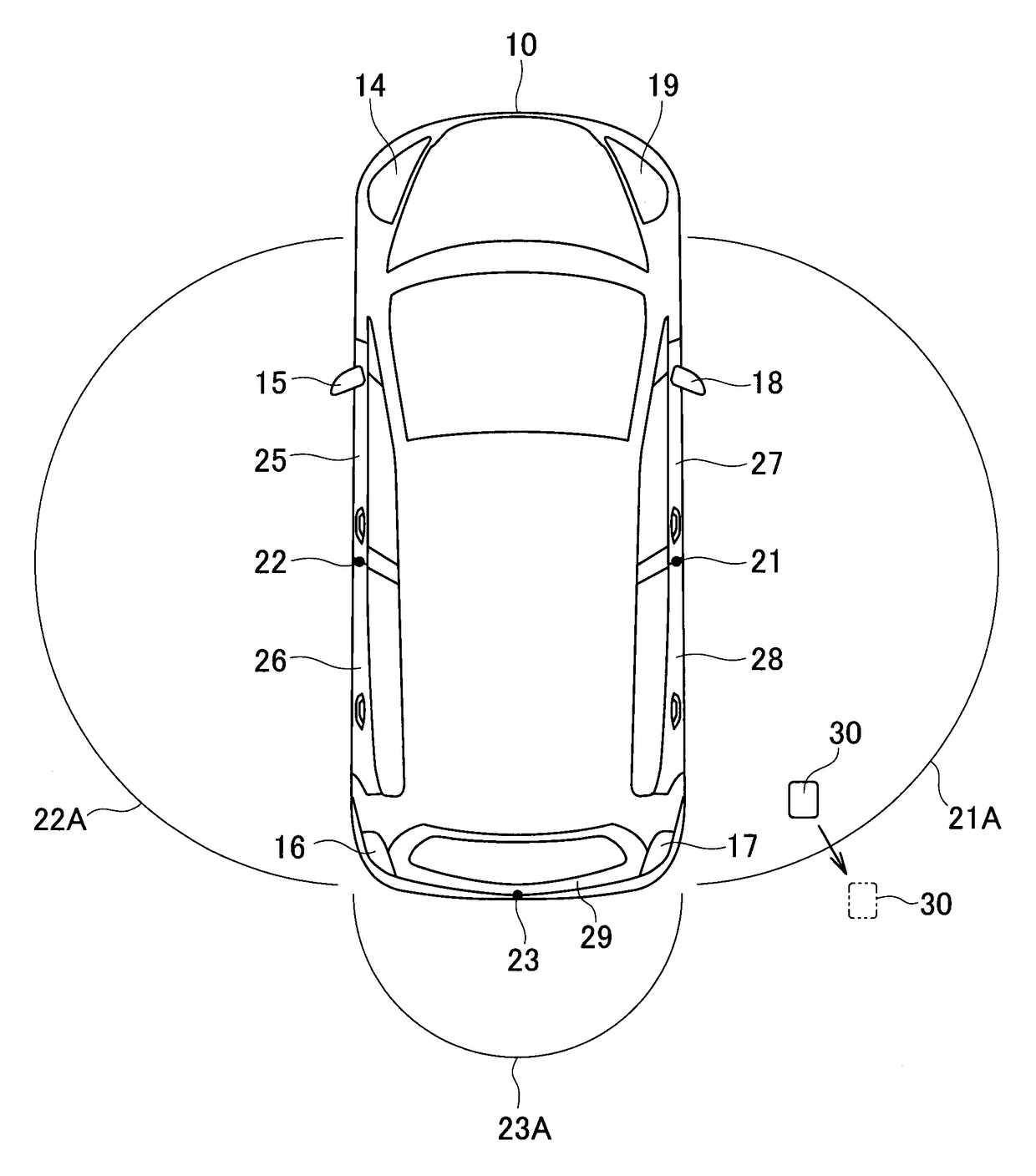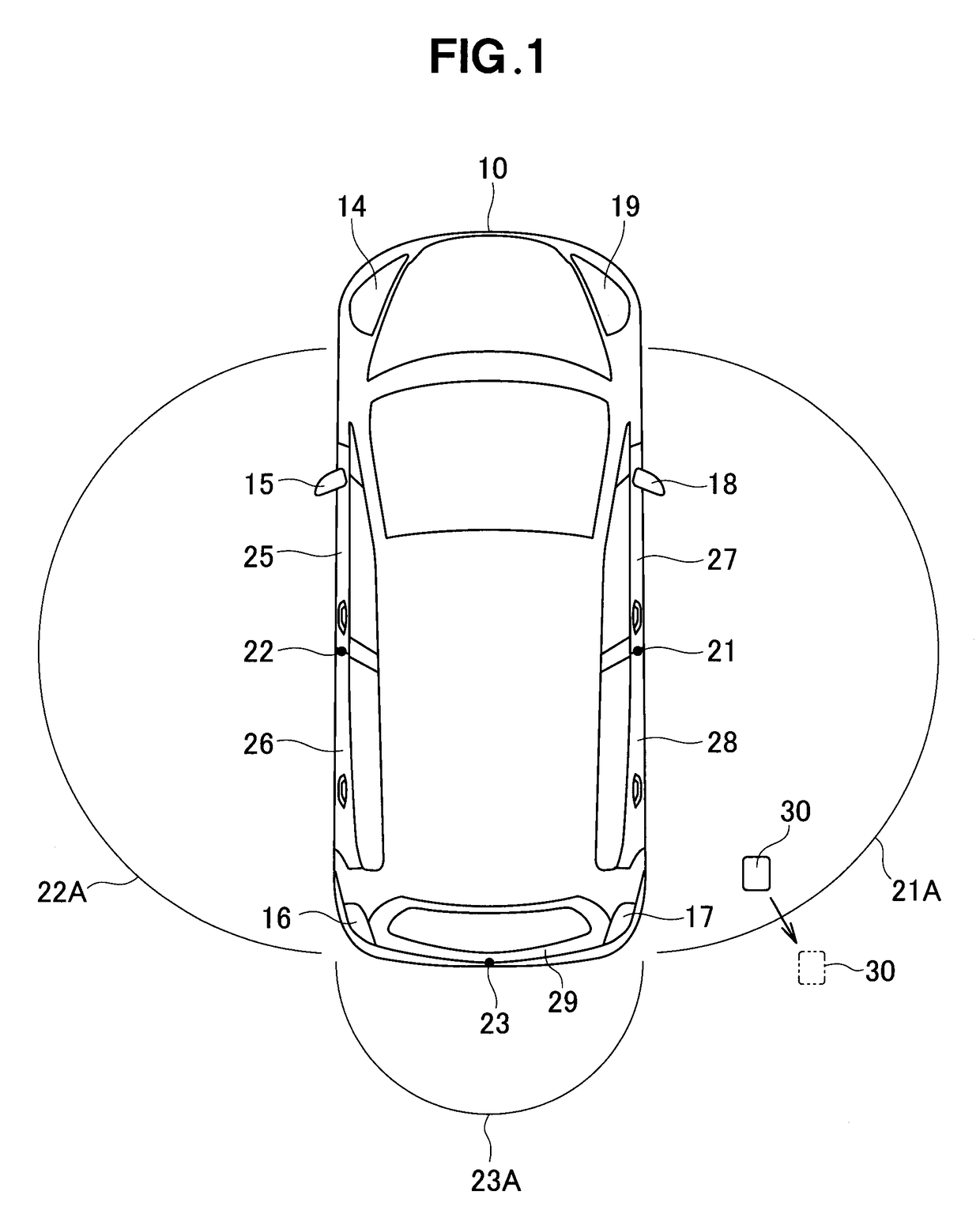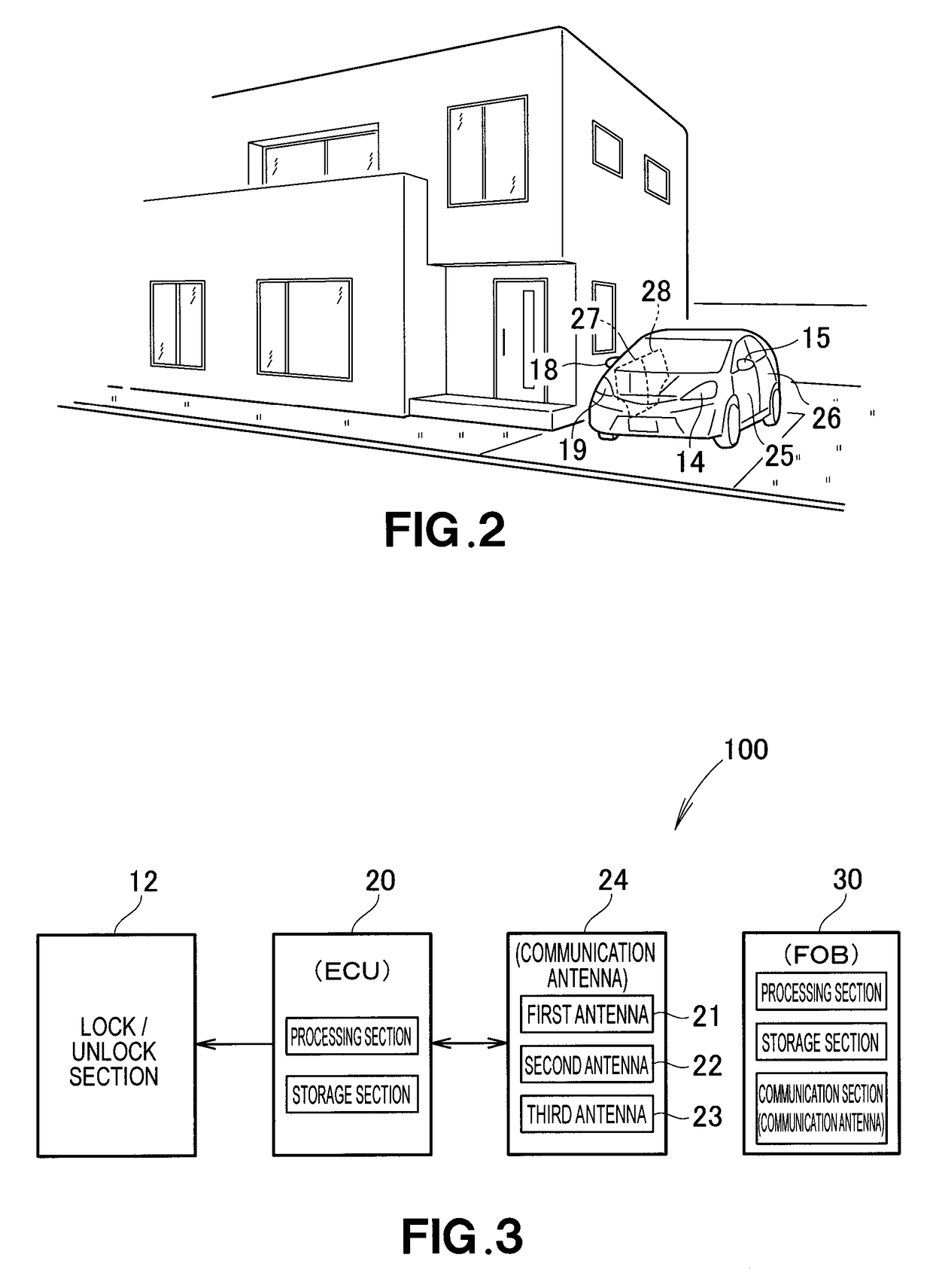Smart entry system
a technology of smart entry and vehicle, applied in the field of vehicle smart entry system, can solve the problem of low possibility of mobile device staying within the second transmission area for a predetermined time, and achieve the effect of enhancing user convenien
- Summary
- Abstract
- Description
- Claims
- Application Information
AI Technical Summary
Benefits of technology
Problems solved by technology
Method used
Image
Examples
Embodiment Construction
[0026]The following will describe the preferred embodiments, but it should be appreciated that the present invention is not limited to the described embodiments and various modifications of the embodiments are possible without departing from the basic principles. The scope of the present invention is therefore to be determined solely by the appended claims. FIG. 1 is a view explanatory of an exemplary transmission area of a smart entry system according to the present invention. As shown in FIG. 1, such a transmission area is set outside of a vehicle 10 that is, for example, a motor vehicle. The transmission area shown in FIG. 1 is a first transmission area (hereinafter sometimes referred to as “first overall transmission area”) that is set first as a user or passenger gets off the vehicle 10. The first transmission area (first overall transmission area) comprises, for example, three first transmission area portions or sub-areas 21A, 22A and 23A. In FIG. 1, a mobile device 30 depicte...
PUM
 Login to View More
Login to View More Abstract
Description
Claims
Application Information
 Login to View More
Login to View More - R&D
- Intellectual Property
- Life Sciences
- Materials
- Tech Scout
- Unparalleled Data Quality
- Higher Quality Content
- 60% Fewer Hallucinations
Browse by: Latest US Patents, China's latest patents, Technical Efficacy Thesaurus, Application Domain, Technology Topic, Popular Technical Reports.
© 2025 PatSnap. All rights reserved.Legal|Privacy policy|Modern Slavery Act Transparency Statement|Sitemap|About US| Contact US: help@patsnap.com



